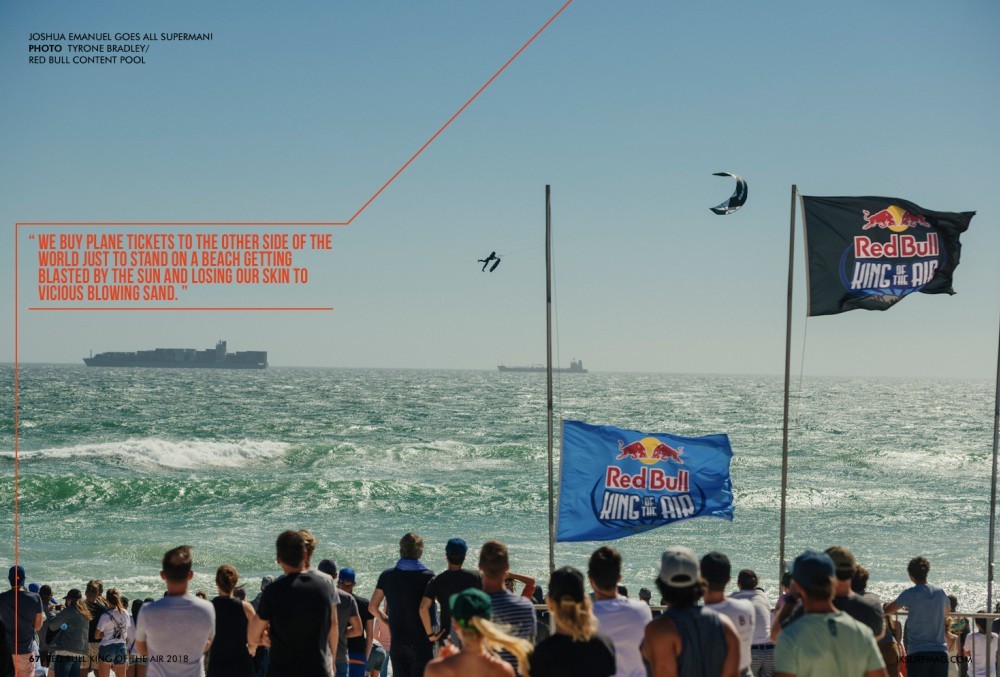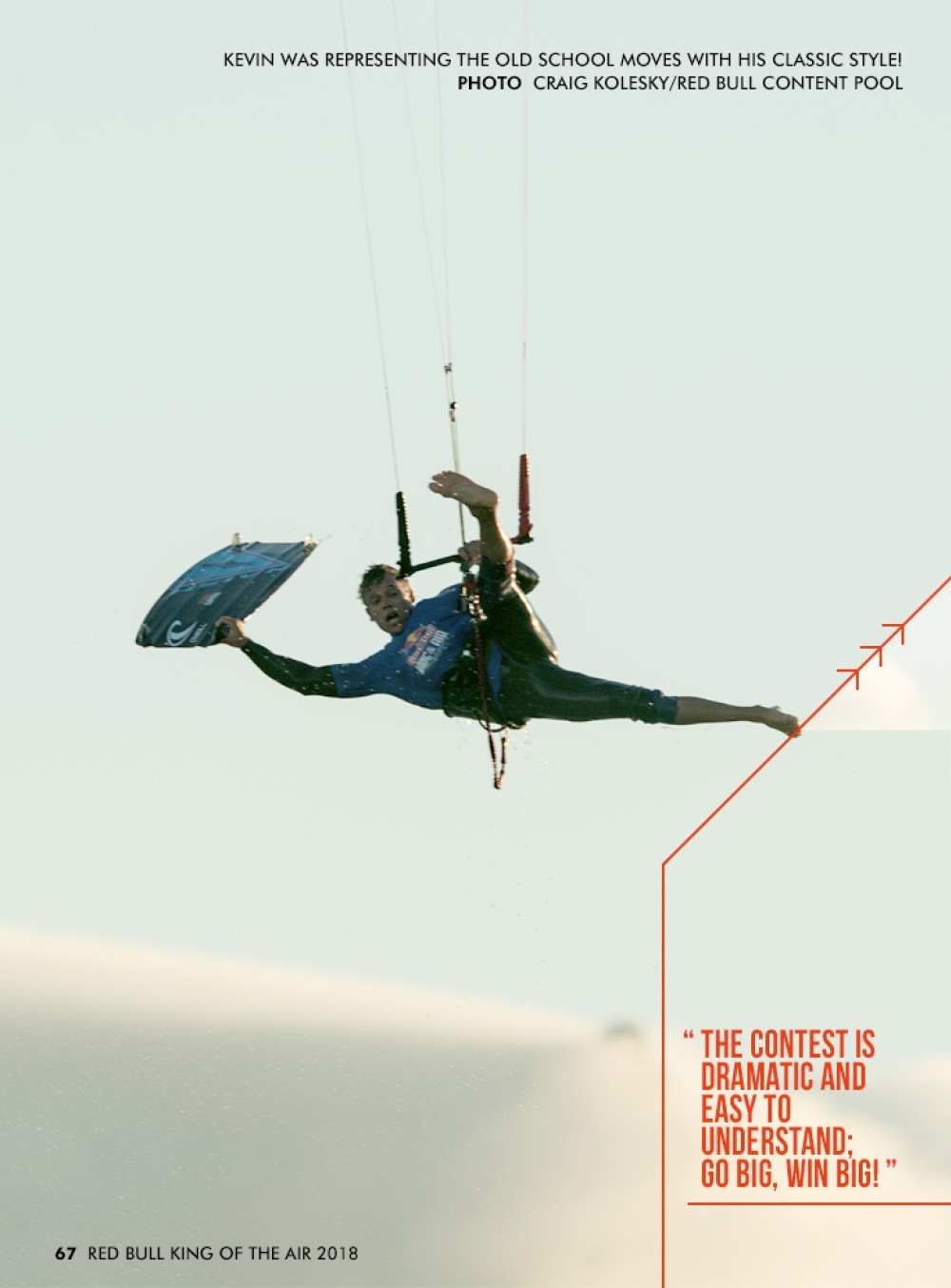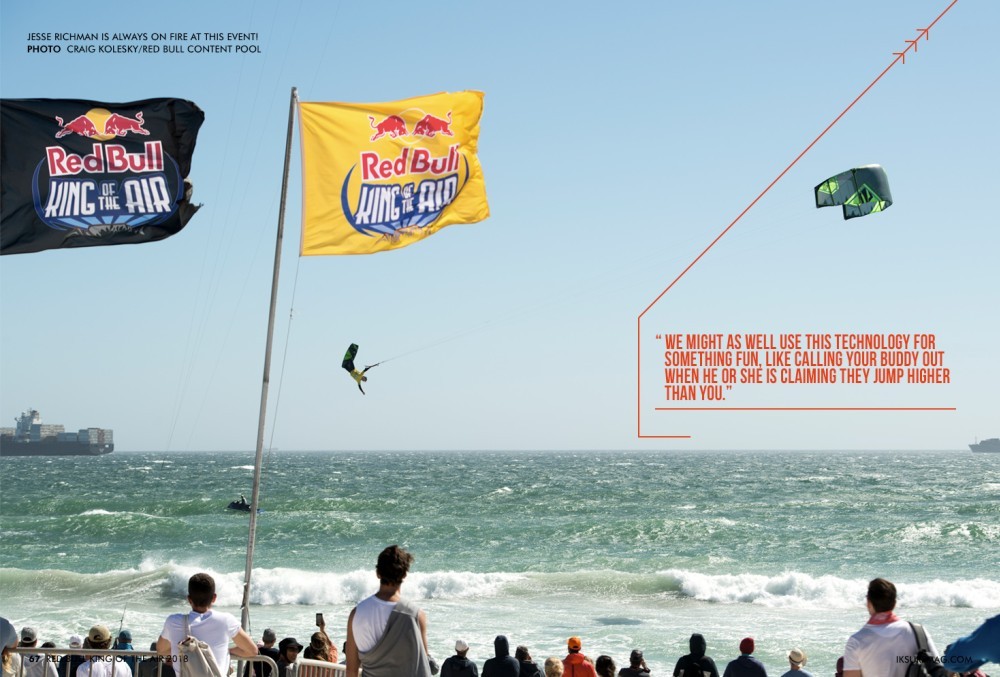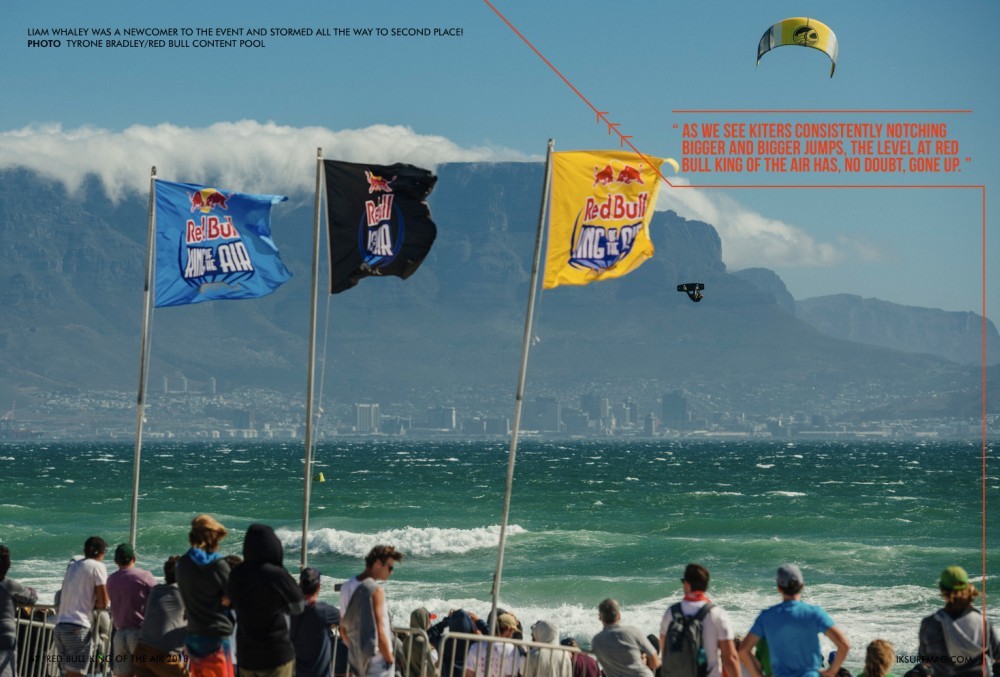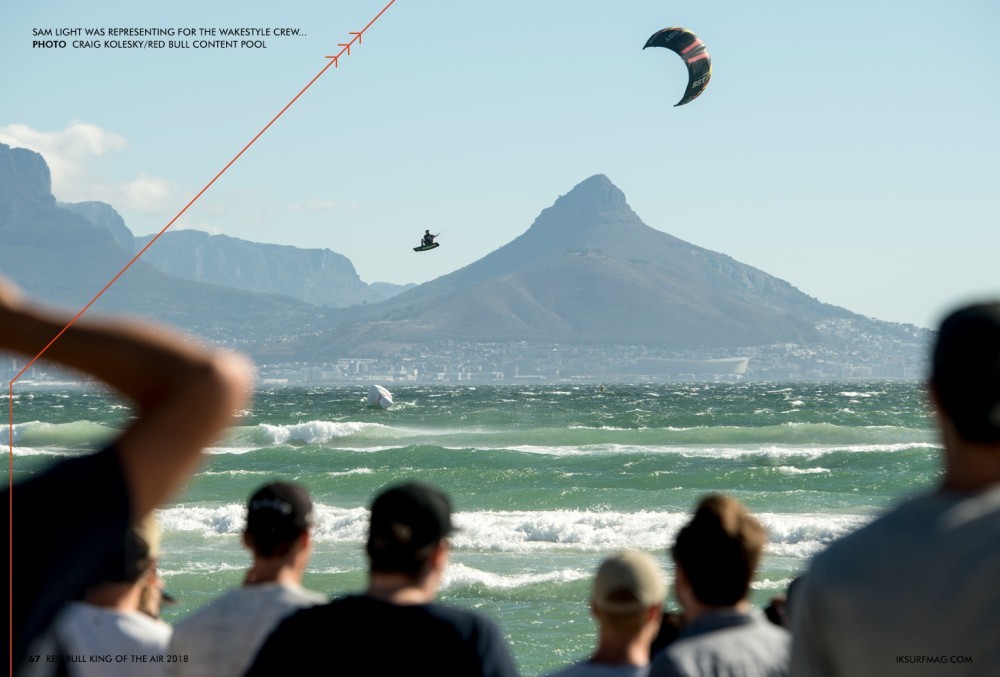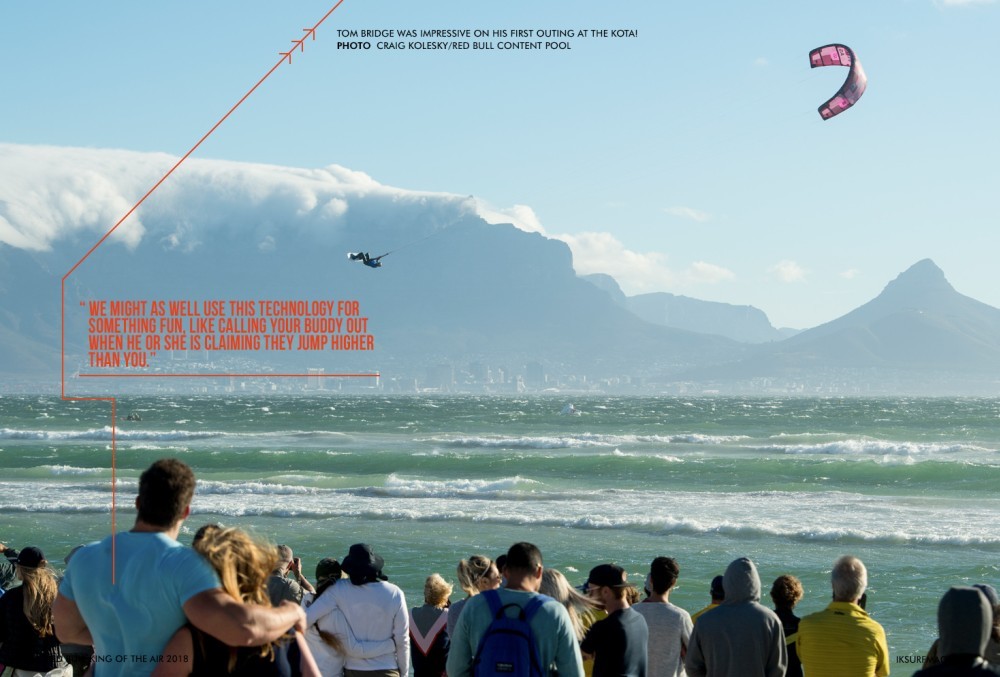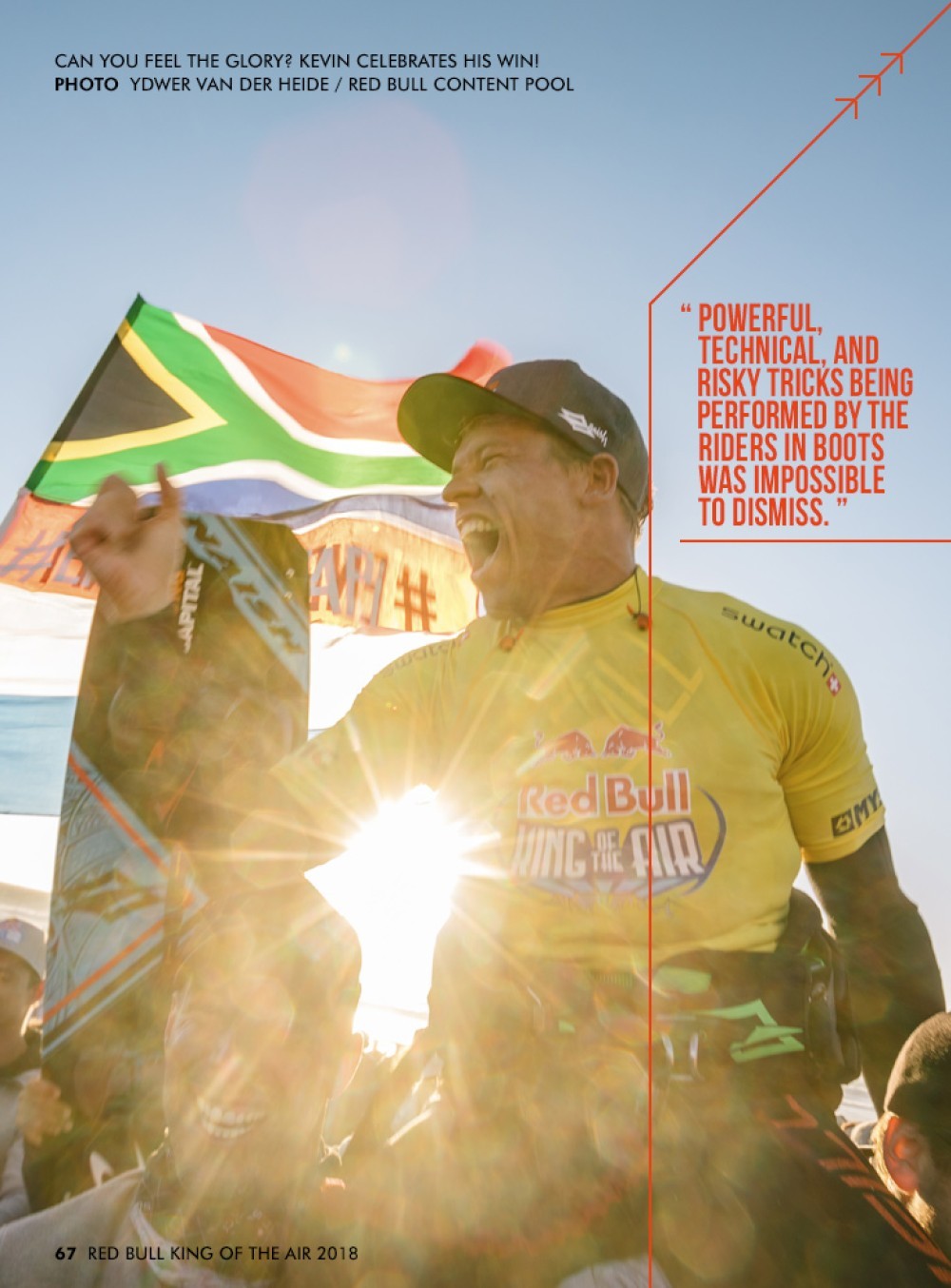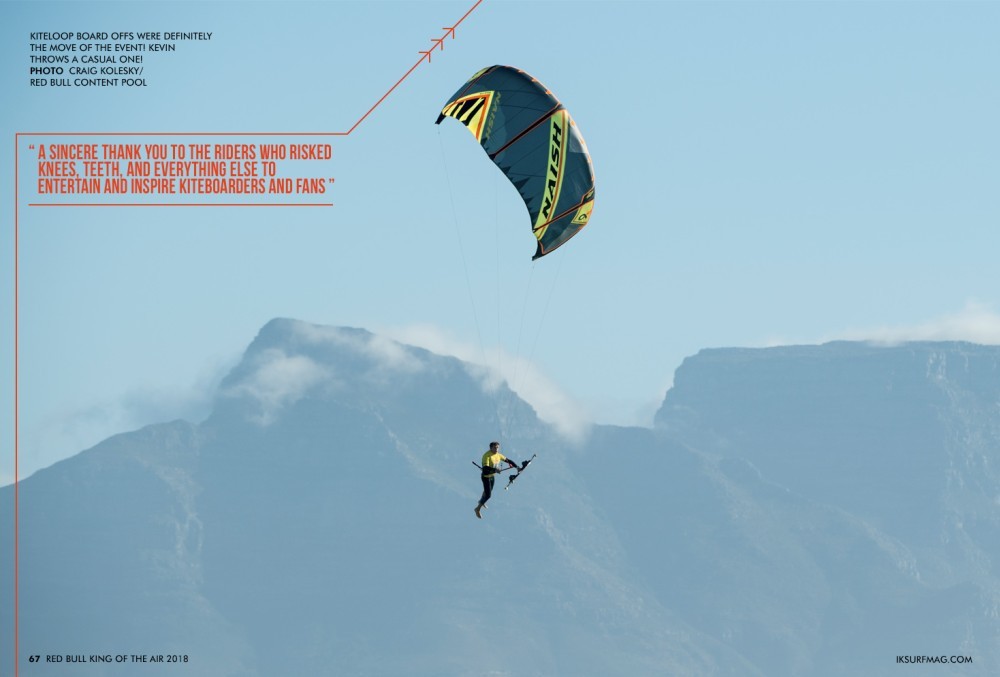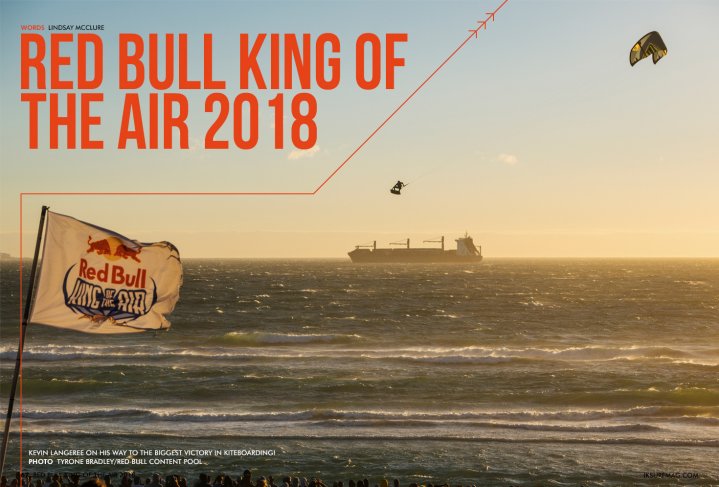
Red Bull King Of The Air 2018
Issue 67 / Thu 8th Feb, 2018
Spoiler Alert: Kevin Langeree is the 2018 Red Bull King of the Air champion! However, it’s 2018, and the news about Kevin’s victory has already saturated the web. We go beyond a simple event recap, unpacking the drama and examining the factors that make Red Bull King of the Air the best day on the calendar for kiteboarding fans around the planet.
Does kiting have an identity crisis? Quite possibly. We’ve got wave riding, freestyle, park riding, racing, snowkiting, foiling, and big air, plus the combo disciplines like strapless freestyle and twin tip racing. Throw in the niche categories like surf skate, land kiting, long distance record chasing, adventure kiting, top speed, and all the rest; it’s fair to say there’s a lot going on in the kiteboarding world.
Aren’t we all just kiters though? Sometimes it feels like the answer is no. A lot of hate gets thrown around, and riders immersed in one discipline don’t necessarily respect the accomplishments of riders in another discipline. Isn’t respect the foundation we need to come together?
I was scrolling through Instagram Stories during the opening heats of the 2018 Red Bull King of the Air when I realised that everyone in the kiteboarding world had their eyes glued to the KOTA live stream. Once a year, the greats in our sport put on a show that grabs everyone’s attention. We buy plane tickets to the other side of the world just to stand on a beach getting blasted by the sun and losing our skin to vicious blowing sand. If we can’t be there in person, we set our alarm clocks for ungodly hours to watch the live stream, sacrificing sleep and sanity.
Why is everyone wild about Red Bull King of the Air? Is it the risk? The crashes? The hype? The sponsors? The riders? Something indescribable?
Access to the storyline makes the event appealing. The contest is dramatic and easy to understand; go big, win big! Riders wait for the conditions to be optimal and then push the throttle to the max. It’s a once-a-year deal, so there is no reason to play it safe. Plus, the venue is spectator friendly, and the live stream is the best there is in kiteboarding.
History
The first Red Bull King of the Air was held on Maui in the year 2000. After five years of wild competitions in Hawaii, the Red Bull King of the Air went on a brief hiatus. As kiteboarding grew up, public interest swung from big air to freestyle, wave riding and racing. In 2013, Red Bull King of the Air landed back on the calendar, this time in Big Bay outside Cape Town, South Africa. The venue fitt the event perfectly, and it was home to Red Bull King of the Air until 2017. In 2018, the contest was held at Kite Beach in Blauberg, just a few kilometres from Big Bay. The change of venue gave riders stronger and more consistent wind to play with.
What Makes Cape Town the spot for KOTA?
Cape Town is a windy place. That doesn’t necessarily mean it’s windy every day, but when it’s windy, it’s absolutely blasting. The official criteria, according to Sportive Director Sergio Cantagalli, to run Red Bull King of the Air is sustained southeasterly wind over 25-knots. The second most important ingredient for big air is the swell that riders use big waves as ramps to launch off. Cape Town has become the unchallenged epicentre for big air kiteboarding. Need proof? Check the Woo Leaderboard HERE.
The WOO Factor
Data rules the world in 2018. Our every move is recorded, dumped into a spreadsheet, exported and analysed. Computers are watching everything we do, embrace it or hate it. Amazon knows what you eat, Google knows where you live, the government know who your friends are, and they all share information with each other. We might as well use this technology for something fun, like calling your buddy out when he or she is claiming they jump higher than you.
WOO lets riders compete head-to-head. Not only can you and your best mate compare the height, hangtime, and g-force of your jumps, but riders can compare their efforts with other kiters around the world.
Loyal WOO users are always in competition mode. A casual session at home becomes another opportunity to climb the leaderboard, pushing riders who have been leapfrogging their way to the top. As we see kiters consistently notching bigger and bigger jumps, the level at Red Bull King of the Air has, no doubt, gone up.
The Format & Judging
Eighteen invited riders battled for the podium. The format was designed so that riders couldn’t take it easy, not even for a minute. From Round 1, the top rider in each heat advanced straight to Round 4. This gave them a huge advantage, so everyone was going all out, trying to punch a more direct ticket to the final. Even within each heat, riders needed to put up big scores as soon as the horn sounded. In Rounds 1, 3, 4, and the Final, the lowest scoring rider was flagged out of their heat at the halfway point.
The judging criteria was straightforward. Each rider’s three best tricks per heat earned a score based on 70% height and 30% extremity. Added to the scores for the three best jumps was a fourth score for overall impression. A high overall impression score was awarded to riders who were pushing the boundaries of the sport, putting on a show, and had dialled in style and execution.
2018
Adding to the drama in 2018 was the unfortunate last-minute injury sustained by 2017 defending champion Nick Jacobsen. Nick broke his ankle training in Cape Town just weeks before the 2018 comp. With Nick out, there were still four former Red Bull King of the Air champions in contention: Aaron Hadlow (2015 & 2016), Kevin Langeree (2014), Jesse Richman (2013), and Ruben Lenten (2005). Looking for a first KOTA victory were a new generation of big air boundary pushers led by WOO world record holder Joshua Emanuel, Spanish freestyle champion Liam Whaley, and 16-year-old Tom Bridge.
Round 1 was dominated by the Netherlands and the United Kingdom, with each country notching three heat victories. Winning their first heat and advancing straight to Round 4 were Aaron Hadlow, Sam Light and Lewis Crathern from the UK along with Steven Akkersdijk, Lasse Walker and Gijs Wassenaar from the Netherlands.
In Round 2, the last-place finishers from Round 1 squared off in two-man heats, with the winner advancing and the loser going home. Round 3 and Round 4 were three-man heats that allowed the top two finishers to advance and sent the third-place finisher to watch the rest of the contest from the bleachers. By Round 5, only six riders remained: Jesse Richman, Lewis Crathern, Liam Whaley, Aaron Hadlow, Kevin Langeree, and Steven Akkersdijk.
Although KOTA does a lot to bring the various factions in kiteboarding together, there are still two obviously warring camps: boots and straps. In the semifinal and final rounds of 2018 Red Bull King of the Air, these two preferences were pitted against each other more starkly than ever. Everyone was throwing megaloops, but the boots riders were also throwing powerful handle pass tricks including megaloop KGBs and huge dangle passes, while the straps riders were focused on the never-been-done megaloop board-offs.
As the tension between these two styles of riding intensified over the course of the competition, kiteboarders around the world enjoyed the debate. The straps riders were jumping bigger, and with 70% of the judging criteria based on the height of the jumps, there was a strong argument for straps riding. On the other hand, the more powerful, technical, and risky tricks being performed by the riders in boots was impossible to dismiss. There’s no doubt that each rider and spectator has his or her preference, but the real question was left to the judges: how to compare the two?
The judges were decisive, and qualifying for the final were Lewis Crathern, Liam Whaley, and Kevin Langeree. At the midway point in the heat the lowest scoring rider, Lewis, was eliminated leaving boots vs. straps, Kevin vs. Liam. In the end, the scores were close. Kevin’s top three tricks were a kiteloop late backroll, boogie loop, and a kite loop board-off, and Liam’s top three tricks were a kiteloop backroll, boogie loop, and double dangle pass. Kevin’s higher marks for overall impression sealed his victory.
Nobody can forget about Aaron Hadlow, whose signature in-it-to-win-it attitude compelled him to switch between a boots board and a straps board in the middle of his heats, allowing him to earn points for both inverted handle-passes and board-off kiteloops. Aaron earned the Mystic Move of the Day award for his boardoff boogie loop.
The sun has set on another year of incredible athleticism in Cape Town, South Africa, and the 2018 Red Bull King of the Air tribal victory mask is Kevin Langeree’s. A sincere thank you to the riders who risked knees, teeth, and everything else to entertain and inspire kiteboarders and fans from every corner of the globe. Regardless of the style of kiting you prefer, or how you ride, the King Of The Air unites us as an impassioned group of enthusiasts like no other event in our sport. Long may it continue!
Videos
By Lindsay McClure
Lindsay is a pro rider from Hood River in the USA, she works for IKSURFMAG as our Features Editor and is an integral part of the team. Lindsay is really into wakestyle riding and can be found in the Hood River Slider Park during the summer months, she also travels all over the world with the World Class Academy helping younger riders develop through kiteboarding!




